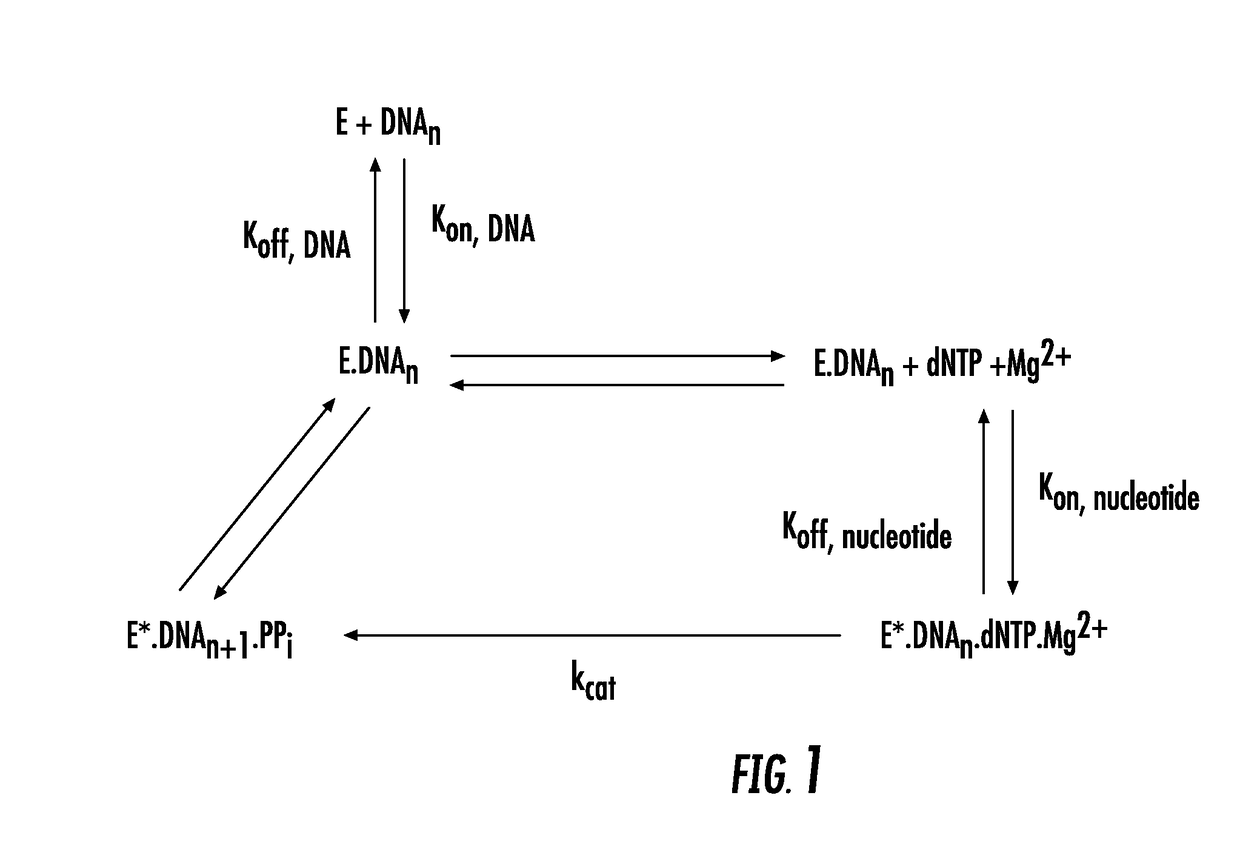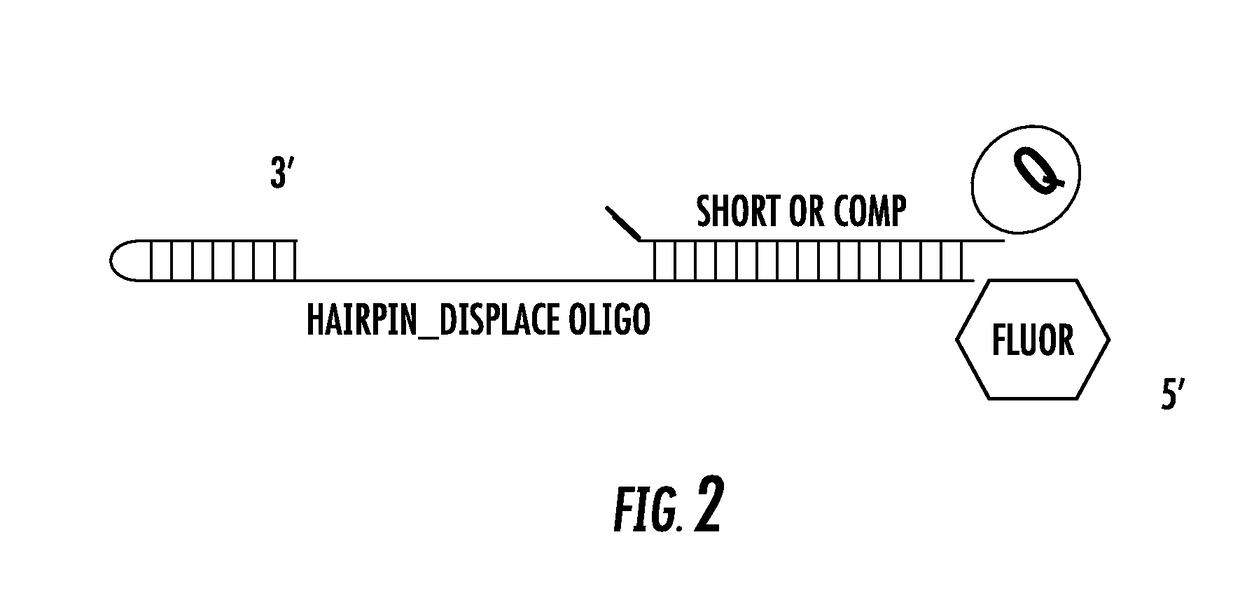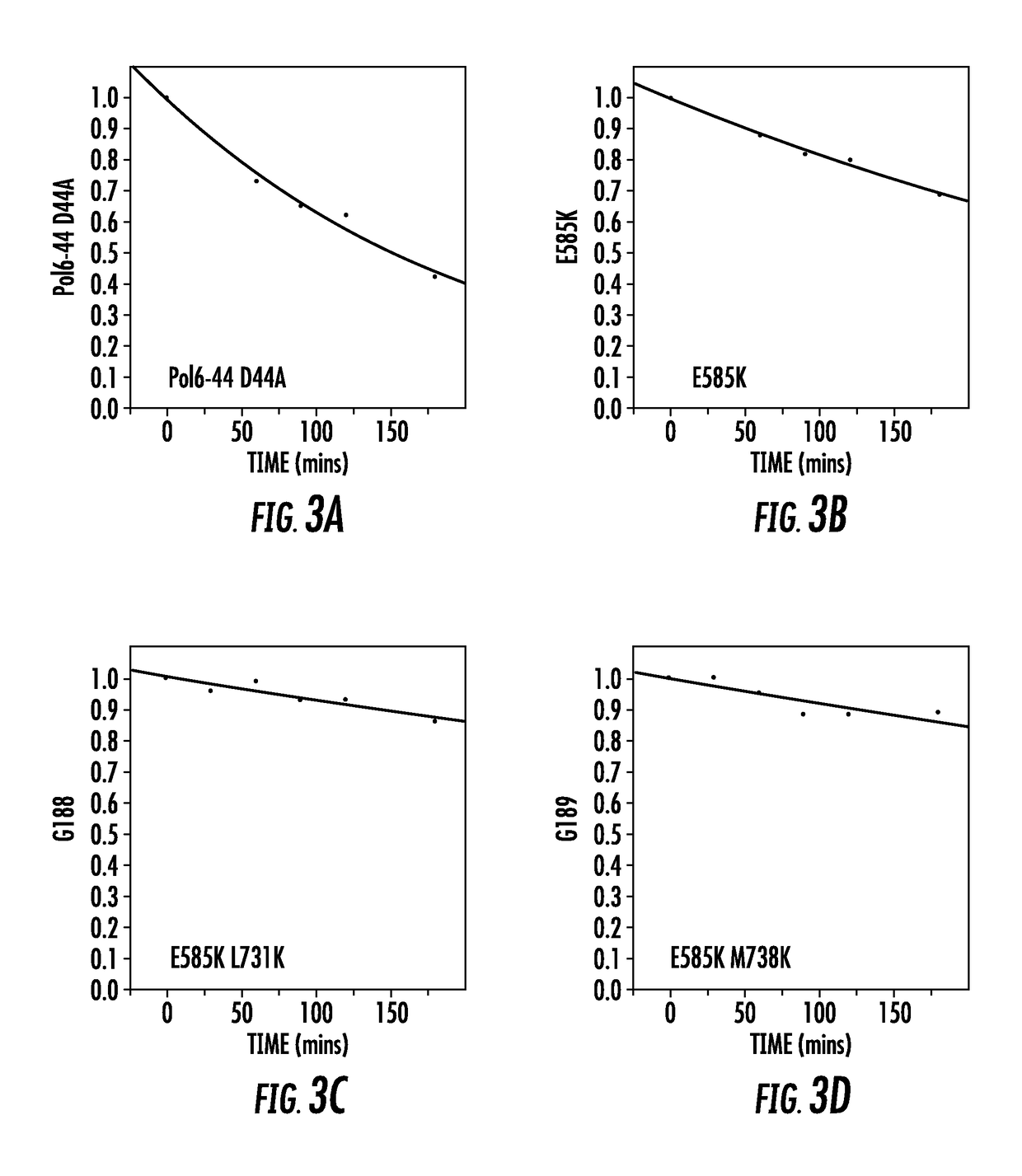Polymerase variants
a polymerase and variant technology, applied in the field of polymerase variants, can solve the problems of processivity and affect the average read length, and achieve the effects of increasing processivity, reducing the rate of template dissociation, and increasing processivity
- Summary
- Abstract
- Description
- Claims
- Application Information
AI Technical Summary
Benefits of technology
Problems solved by technology
Method used
Image
Examples
example 1
[0135]Site directed mutagenesis was performed to mutate one or more amino acids of the putative DNA binding site of parental variant Pol6-44-X1 polymerase (SEQ ID NO:4), Pol6-44-X1 was derived from wild-type Pol6 to comprise the following substitutions: (Pol6-S366A T529M A547F D44A).
[0136]DNA of SEQ ID NO:4 encoding the variant polymerase pol6-44-X1 (SEQ ID NO:5) was purchased from a commercial source (DNA 2.0, Menlo Park, Calif.). The sequence was verified by sequencing.
[0137]The Pol6-44-X1 was expressed as a fusion protein having an N-terminal His-tag (underlined sequence in SEQ ID NO:4) and SpyCatcher domain (bolded italic sequence in SEQ ID NO:4).
[0138]The Pol6-44-X1 polymerase variant (SEQ ID NO:4) was derived from wild-type pol6 (SEQ ID NO:2), and the numbering of the amino acid mutations described for Pol6 D44A-X1 refer to the amino acid positions of SEQ ID NO.2. Rational positions to impact Pol6 processivity were identified based on analysis of Phi 29 cry...
example 2
Expression and Purification
[0150]Variants of the parental polymerase Pol6-44-X1 (SEQ ID NO:4) were expressed and purified using a high throughput method as follows.
[0151]DNA encoding variants in expression plasmid pD441 vector was transformed into competent E. coil, and glycerol stocks of the transformed cells were made. Starting from a tiny pick of the glycerol stock, grow 1 ml starter culture in LB with Glucase and 100 μg / ml Kanamycin for approximately 8 hrs. Transfer 25 μl of log phase starter culture into 1 ml of expression media (Terrific Broth (TB) autoinduction media supplemented with 0.2% glucose, 50 mM Potassium Phosphate, 5 nM MgCl2 and 100 μg / ml Kanamycin) in 96-deep well plates. The plates were incubated with shaking at 250-300 rpm for 36-40 hrs at 28° C.
[0152]Cells were then harvested via centrifugation at 3200×g for 30 minutes at 4° C. The media was decanted off and the call pellet resuspended in 200 μl pre-chilled lysis buffer (20 mM Potassium Phosphate pH 7.5, 100 mM...
example 3
Static Processivity Assay
[0156]The effect of mutations of amino acids of the DNA-binding site of variant polymerase Pol6-44-X1 i.e. Pol6-44-D44A, on the processivity of the variant polymerase was analyzed using a static processivity assay whereby the dissociation of DNA template from the variant polymerases was determined in the absence of polynucleotide synthesis.
[0157]The assay is a FRET assay whereby fluorescence emitted by a fluorogenic DNA template substrate is measured in the presence of non-fluorogenic competing DNA template. Referring to FIG. 2, the FRET assay uses a fluorogenic DNA template comprising Gyp fluoro hare-labelled DNA template (5′- / Cy5 / AGA GTG ATA GTA TGA TTA TGT AGA TGT AGG ATT TGA TAT GTG AGT AGC CGA ATG AAA CCT T / iSpC3 / TT GGT TTG ATT CGG-3′) (SEQ ID NOS 12 and 16)), and having bound to it a complementary oligonucleotide comprising a quencher 3BHQ-2 (5′-TTT TCA TAA TCA TAC TAT CAC TCT / 3BHQ_2 / -3′ (SEQ ID NO;13)). A DNA polymerase is incubated with the template-...
PUM
| Property | Measurement | Unit |
|---|---|---|
| Fraction | aaaaa | aaaaa |
| Molar density | aaaaa | aaaaa |
| Concentration | aaaaa | aaaaa |
Abstract
Description
Claims
Application Information
 Login to View More
Login to View More - R&D
- Intellectual Property
- Life Sciences
- Materials
- Tech Scout
- Unparalleled Data Quality
- Higher Quality Content
- 60% Fewer Hallucinations
Browse by: Latest US Patents, China's latest patents, Technical Efficacy Thesaurus, Application Domain, Technology Topic, Popular Technical Reports.
© 2025 PatSnap. All rights reserved.Legal|Privacy policy|Modern Slavery Act Transparency Statement|Sitemap|About US| Contact US: help@patsnap.com



